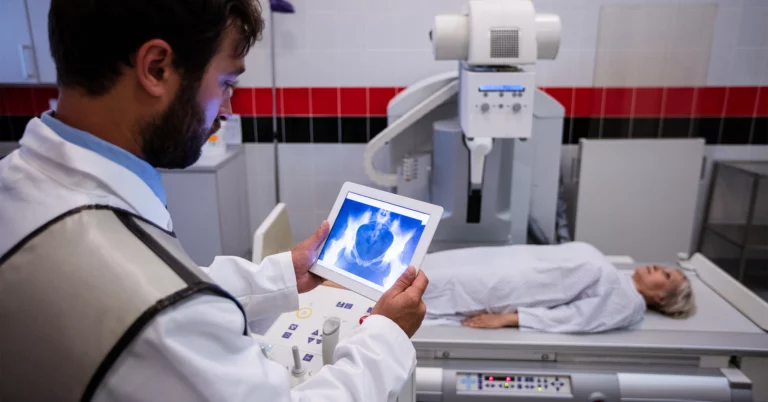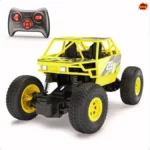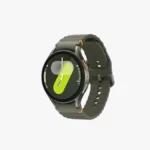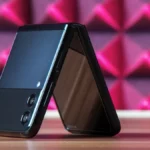Living in today’s times has become difficult and extremely unhealthy due to our daily habits. In this scenario, a health monitor device is the tool that will help us monitor our health and give a real-time check on how our health is functioning. But to stay updated with our health, we must have the right health monitor device. Interesting, Right? Let’s know more.
Remote Patient Monitoring Devices:
Remote Patient Monitoring (RPM) devices allow the providers to monitor, report and analyze their patient’s acute or chronic conditions without being on the premises of a hospital or a clinic setting. These devices enable real-time understanding of a patient’s disease state and enable the provider to make proactive clinical decisions. Pretty Handy and technologically friendly way of getting health updates!
Remote patient monitoring devices help patients engage with a better understanding of their health on a day-to-day basis. When a patient is engaged in keeping an active track of their health daily through these RPM devices, they are most likely to see lasting positive health outcomes. These devices are a tool for a healthy life.
I know folks that you all have now gotten an active interest in keeping track of your health daily, but do you know the right health monitor device to help you keep an active track of your health handy and hassle-free way? I am sure you don’t have the answer to this question at this moment, but by the end of the article, you will definitely have the answer.
So, are you ready to know about some of the best health monitor devices that will help you keep an active track of your health? I am sure you do! So, without any delay, let’s get to know the 7 most common health monitor devices you can use to monitor your health.
7 Common Health Monitor Devices that You Must Know About:
Glucometer:
This is one of the most common health monitor devices that I am sure you will be aware of. Glucometers help test a patient’s blood sugar through tiny drops of blood placed on a test strip and connected to the device. The patient would place a small drop of blood on the test strip, which will be read by the meter to produce the blood glucose reading. The reading will then be sent in real time for the provider to have reviewed.
Many patients who have type 1 diabetes and type 2 diabetes use glucometers actively on a day-to-day basis. They use it often multiple times a day to manage their blood sugar level. The glucometer is a very useful health monitor device for the patient and their provider to understand how certain factors influence the patient’s blood sugar and diabetic symptoms. These factors include diet, exercise, medication effects, stress, or illness. So, folks, if you have family members who have diabetes, then a glucometer is a must-have health monitor device at our home.
Blood Pressure Cuff:
This is another useful health monitor device you must have at home to keep track of your blood pressure. Blood pressure cuffs calculate a patient’s heart rate and blood flow by actively measuring the changes in the artery motion. The Bluetooth blood pressure cuff is similar to the one used at the doctor’s clinic. However, the difference is that it sends the data in real-time to the clinician for review.
Blood pressure monitoring can help in assisting with the management of many conditions, which include hypertension, CHF, diabetes, and kidney malfunction. Any symptom, including hypertension and high blood pressure, can benefit from at-home blood pressure monitoring.
Day-to-day monitoring of blood pressure is beneficial as it gives an insight into the day-to-day status of your heart, as opposed to the one at a point-in-time reading. It also helps to avoid white coat hypertension, in which the patient’s blood pressure reading in the office is higher than measured at home.
However, daily blood pressure monitoring helps avoid masked hypertension and the scenario when a patient’s blood pressure is normal at the doctor’s office but is higher at home.
So, you must have a blood pressure cuff at home as it is an effective health monitor device.
ECG + Stethoscope:
Needless to say, an ECG+Stethoscope is a very useful health monitor device, and it helps monitor heart health. An ECG captures the functions of the heart, while a stethoscope captures the heart and the sounds of the lungs.
ECG is commonly used for cardiac conditions like arrhythmias or coronary artery disease patients. The stethoscope amplifies the internal sounds of the body, enabling the provider to capture lung, heart, and bowel sounds.
Health monitor device like Eko Duo is used by many professionals to capture lung and heart sounds virtually. At home also, the patient can self-monitor using the Eko and the ECG or stethoscope reading that will be sent directly to the clinician to review.
It can be done in real-time via virtual visits or saved in the portal for clinical review later. The DUO is also an all-in-one cardiac assessment that will allow the providers to monitor their patient’s heart and lung sounds from afar; this enables early detection and more personalized care in delivery.
Pulse Oximeter:
This is another useful health monitor device you must have at home, especially now. It is a non-invasive clip that will be attached to the patient’s finger and occasionally to the earlobe to measure wavelengths that determine the blood oxygen level. It would also measure how much oxygen s circulating in the patient’s red blood cells. Additionally, the pulse oximeter would also record a patient’s pulse.
Pulse oximeters are widely used among patients suffering from chronic diseases, that includes chronic heart or lung issues like COPD or CHF, and for COVID-19 screening and monitoring.
Pulse Oximeter can also be used for patients who have pneumonia and asthma. Pulse oximeters help providers to monitor changes in a patient’s lung function. For COVID-19 patients, low blood oxygen levels are often a key indicator of a positive diagnosis.
Thermometer:
This health monitor device needs no introduction; we all have thermometers at home. A Bluetooth thermometer provides a fast and accurate picture measuring the patient’s fever (body temperature) and offers the provider essential information to inform the next steps of care.
Many Bluetooth thermometers are available in the market today, including non-touch thermometers, which scan the forehead, and contact thermometers, which most commonly are placed under the patient’s tongue to get an accurate reading.
A fever is an indicator of many symptoms, especially in the current global scenario it is an important symptom of COVID-19. Other symptoms include flu or other infections. A fever can be a sign of worsening or exacerbated symptoms for other conditions.
Wearables (Activity Trackers and Continuous Monitoring):
I am pretty sure you all are fans of the Apple watch, Aren’t you? But these wearables serve as a very good health monitor device that will help cater to the day-to-day health updates you need to know.
Activity trackers help track their patient’s steps, heart rate, fall risk, and even sleep. It offers the provider to check on the patient’s daily routine, and it also helps the provider understand how daily activities can affect the patient’s health and symptoms.
Providers can use this data from the activity to inform about the patient’s treatment plan, and it also helps in many other activities.
Some of the common activity trackers include the Apple Watch and Fitbit. Some wearables also enable continuous monitoring through a patch or sticker. When these are applied to the patient’s body, these wearables facilitate ongoing symptom and biometric tracking. Wearables can track a patient’s blood pressure, heart rate, glucose, weight, and stress in one device.
Pretty cool that you get health updates on wearing a watch!
Scale:
Bluetooth scales help in enabling the patient to track changes in their weight over time and also the provider to monitor those changes to ensure symptoms are not worsening and if they intervene. For patients who have CHF, especially where fluctuations in body weight because of water retention, this is a device that you must have.
For patients who have obesity, Bluetooth scales enable self-management, encouraging them to take responsibility and identify trends in their behaviour. So, having a Bluetooth scale at home is a must-have health monitor device.
Conclusion:
This is all about the common health monitor device you must know about. Hope the article helped you get all the relevant information you needed.

















